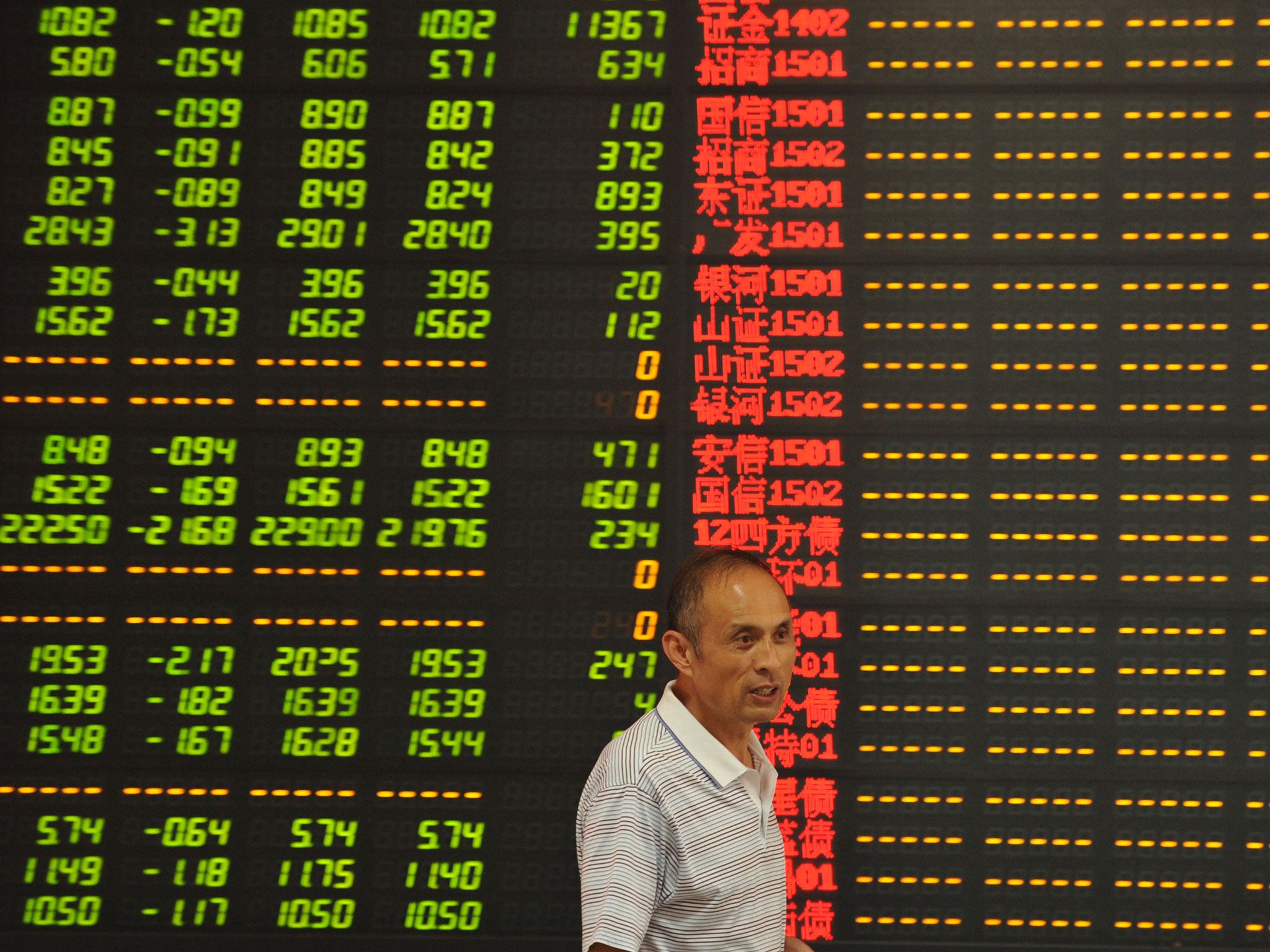There may be no sudden fallout from China’s crash – but give it time
Das Capital: Chinese households may increase already high savings rates, slowing growth

In the aftermath of share falls in the Chinese stock market, there is increased focus on the wider effects.
China’s problems are unlikely to have any immediate impact on other equity markets directly, due to its limited integration with international markets and the fact that these markets did not see a sharp parallel rise. The effects on China’s economic activity are the primary concern. These, in turn, may flow through into the global economy, affecting growth, trade, commodity prices, inflation and capital flows.
The impact on the real economy has been muted to date. The paper profits of inflated share prices did not have a major effect on consumption. It is incorrect to assume, however, that the fall will have no effects. Chinese households may increase already high saving rates, reducing consumption and slowing growth. The output of the finance industry contributed about 16 per cent of GDP in the first quarter of 2015. It accounted for 1.3 percentage points of China’s 7 per cent growth in the same period, compared with a contribution of about 0.7 points to the 7.4 per cent growth in 2014.
The financial impact may be greater. Given that a significant part of the rise in stock prices was driven by borrowings to purchase shares, the recent falls will reduce the value of collateral. To the extent that investors cannot meet margin calls, lenders may suffer losses. Also affected will be many large shareholders and state-owned enterprises, whose holdings are pledged as collateral for loans. The falls increase the risk of default. The level of leverage may account for the difficulty in initially arresting the pace of the market falls.
The consensus view is that such loans are modest relative to the size of the banks (around 1.5 per cent of total banking assets) and the economy, implying the risk of a major financial crisis is limited. But there are reasons for caution.
First, the amounts involved may be much larger than expected. The amount of official margin debt extended by securities companies of $250-300bn may be only a fraction of the real level of stock-secured debt. Once vehicles like umbrella trusts, private lending arrangements and the rest are included, the amount may be 50-100 per cent higher.
China analyst Anne Stevenson-Yang of J Capital Research argues that the increase in market capitalisation is directly related to the net increase in financing generally since the boom started. The nearly $4 trillion rise in values was not related to value created by companies, as overall earnings declined. It was also unrelated to property prices and other asset values, which were stagnant. At the same time increases in bank deposits or foreign capital inflows were not comparable with the expansion of equity values.
One possible explanation is credit creation by the central bank, through the expansion of lending in the interbank market. This would mean the share market is supporting about half the increase in its value (assuming a loan-to-share value ratio of 50 per cent) in debt. This suggests that the central bank and state-owned banks may have extended up to $2trn to securities companies, brokers, and smaller banks and co-operatives, which in turn have financed share purchases.
Second, the exposure of the banks is greater than commonly assumed. About 60-70 per cent of all lending in China is from banks. While they are precluded from having direct exposure to stocks, banks have significant exposure to securities companies, brokers, investment funds and trusts which provide margin financing. Banks also finance listed companies where the collateral securing the loan is stocks. General-purpose bank loans to household and companies may also have been used to buy stocks. The problems may only emerge over time.
Third, the official permitted level of leverage is a modest two times, or loans totalling 50 per cent of the value of stocks bought. In reality, leverage is often higher, with multiple layers of leverage: investors borrow funds from a bank and use the borrowed funds as capital to secure a margin loan.
The financial exposures derive from an essential circularity in the engineering of the stock boom. The intention was to use higher stock prices to allow heavily indebted entities to raise equity to pay back otherwise unsustainable borrowing. Instead, the banks were lending money to investors to buy shares, with the proceeds used to pay back the bank. In reality, the banks have merely exchanged risks rather than reducing them.
Satyajit Das is a former banker and author. His latest book – entitled ‘A Banquet of Consequences’ (in Australia and Europe) or ‘Age of Stagnation’ (North America and Asia) – is scheduled for release shortly.
Join our commenting forum
Join thought-provoking conversations, follow other Independent readers and see their replies
Comments
Bookmark popover
Removed from bookmarks